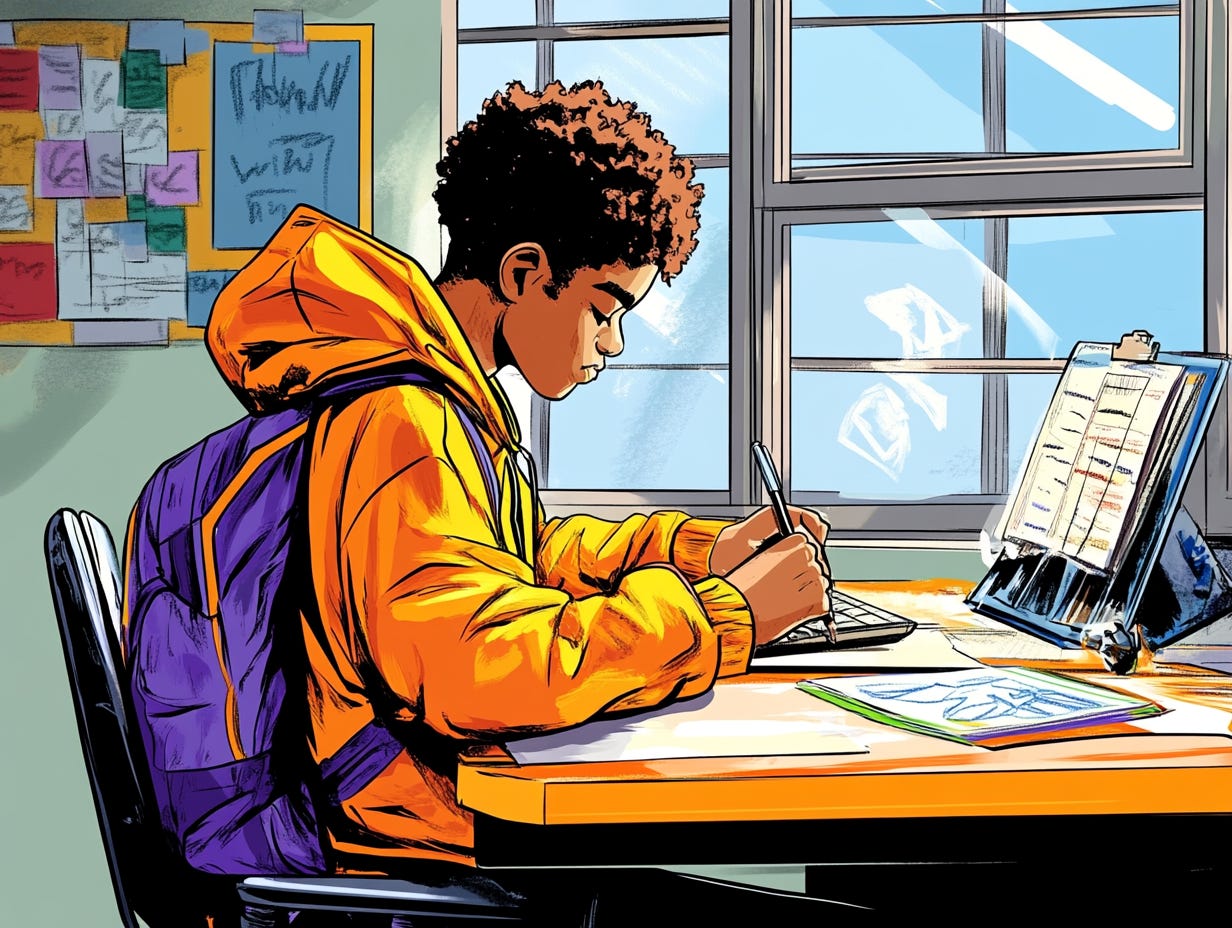Station Rotations: A Practical Solution to Today's Middle School Classroom Challenges
How Station Rotations Can Transform Learing — A Practical 3-Part Series for Educators
Middle school classrooms are not easy places to teach. On any given day, teachers are expected to manage students with a wide range of skills, attention spans, and social-emotional needs. Some students are working well above grade level, while others are two or more years behind. Add to that behavior management, keeping students engaged, and trying to cover curriculum, and it’s easy to see why so many teachers feel pulled in every direction.
The reality is that whole-group instruction doesn’t always meet the needs of middle school students, especially in classrooms where skill gaps are wide. Teachers know this, but often don’t have a structure that makes differentiation possible without adding hours of prep time.
This is where station rotations come in. They’re not a trend or something that only works for elementary classrooms. They’re a practical way to structure middle school lessons to better meet the needs of all students—without sacrificing classroom management or spending hours planning.
What Are Station Rotations?
Station rotations are a method of organizing class time where students rotate between different learning activities, usually working in small groups. Instead of trying to hold the attention of 30 students for an entire period, the teacher organizes them into smaller, focused groups that rotate through a set of tasks.
A typical station rotation in a middle school classroom might include:
An independent or online station, where students work on skill practice or content review, often using programs like IXL, i-Ready, or doing an assignment designed to be completed on their own.
A collaborative station, where students work in pairs or small groups to complete an assignment, solve a problem, or engage in academic discussion.
A teacher-led station, where the teacher works directly with a small group for guided instruction, reteaching, or enrichment based on student needs.
Each station usually lasts about 15 to 20 minutes, depending on the length of the period.
Why Stations Fit the Needs of Middle School
Station rotations align well with what middle school students actually need. By nature, middle schoolers struggle to focus for long periods, crave social interaction, and often need a mix of supports and challenges in the same room.
Here’s why stations work:
Shorter chunks of time: Breaking lessons into 15-20 minute blocks helps students stay focused. Long lectures or independent work periods lose many students after the first few minutes.
Built-in movement: Moving between stations gives students a way to reset. Sitting still for an entire period is a struggle for many students, and stations allow for natural transitions.
Structured collaboration: Middle schoolers are social. Collaborative stations give them a way to work together within clear expectations—without turning group work into chaos.
Targeted teacher time: Instead of trying to check in with 30 students at once, the teacher-led station gives you space to focus on a smaller group. This is where real differentiation happens—reteaching for some, extending learning for others.
Independent practice and reflection: The independent station builds students’ capacity to work on their own and think through problems without immediate teacher support, which is a skill many middle school students need to strengthen.
Addressing Real Challenges, Not Adding More Work
Teachers are often hesitant to adopt new strategies because they sound like more work. But station rotations are not about creating extra tasks—they are about restructuring what you already do so that students are more engaged and you’re better able to meet individual needs.
Instead of delivering a 30-minute lesson to the whole class and hoping it reaches everyone, station rotations give you time to sit with small groups and work directly with students who need your attention most—while the rest of the class is engaged in meaningful tasks.
In a middle school classroom, this can mean catching up struggling readers, pushing higher-level thinkers, or simply giving quieter students a chance to ask questions they wouldn’t ask in front of the whole class.
You Don’t Have to Start Big
Station rotations don’t have to be all-or-nothing. You don’t have to do three stations every day to make them work. Many teachers start with two stations—a teacher station and an independent station—and add more as students get used to the routine.
The key is to start small and build systems that work for you and your students.
Where We’re Going Next
In Part 2, I’ll take a deeper look at the research and educational theory that supports station rotations—including why this approach makes sense for middle school learners. We’ll connect stations to constructivism, Vygotsky’s ideas on social learning, Dewey’s progressive education, and Gardner’s multiple intelligences—all of which support active, flexible, and student-centered learning environments.
If you’re trying to balance engagement, differentiation, and effective classroom management in today’s middle school setting, station rotations are a strategy worth considering.
Stay tuned for Part 2: The Theory Behind Station Rotations—Why It Works for Middle School. Have a blessed day.





